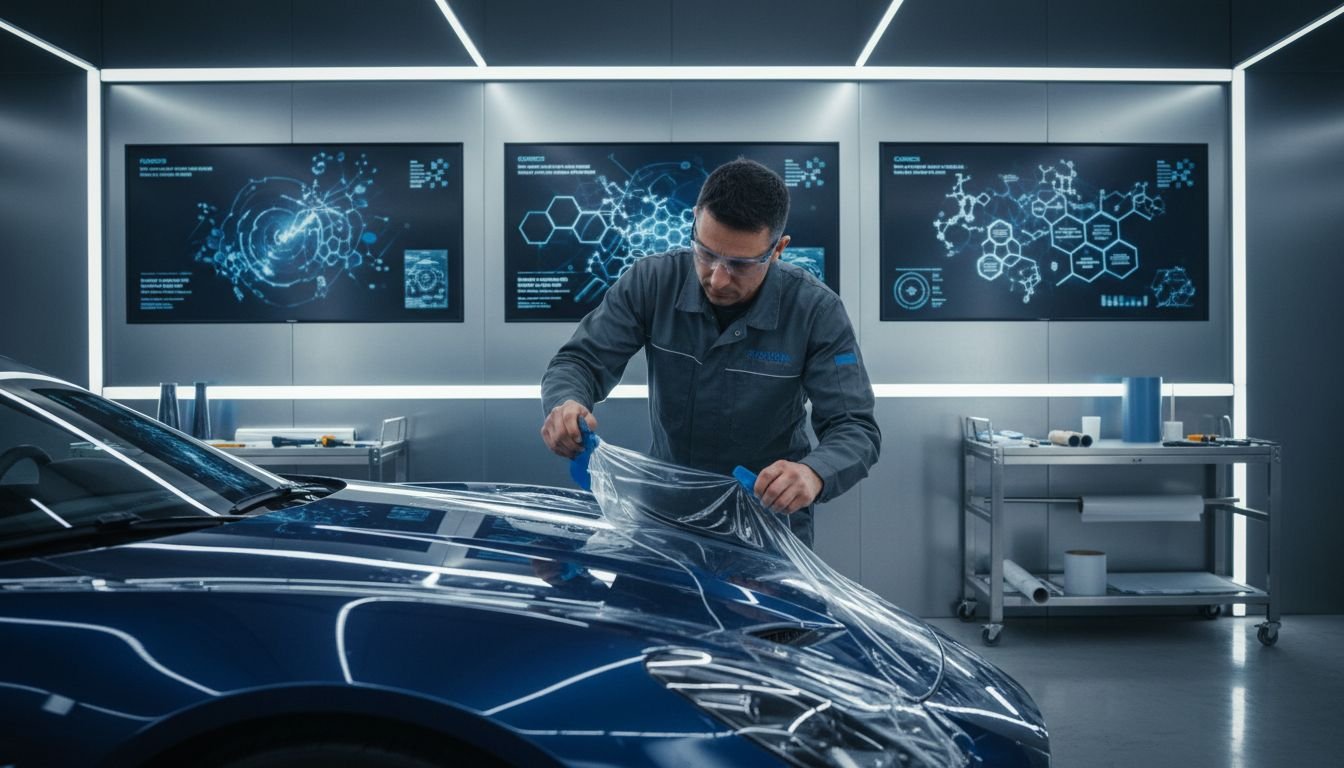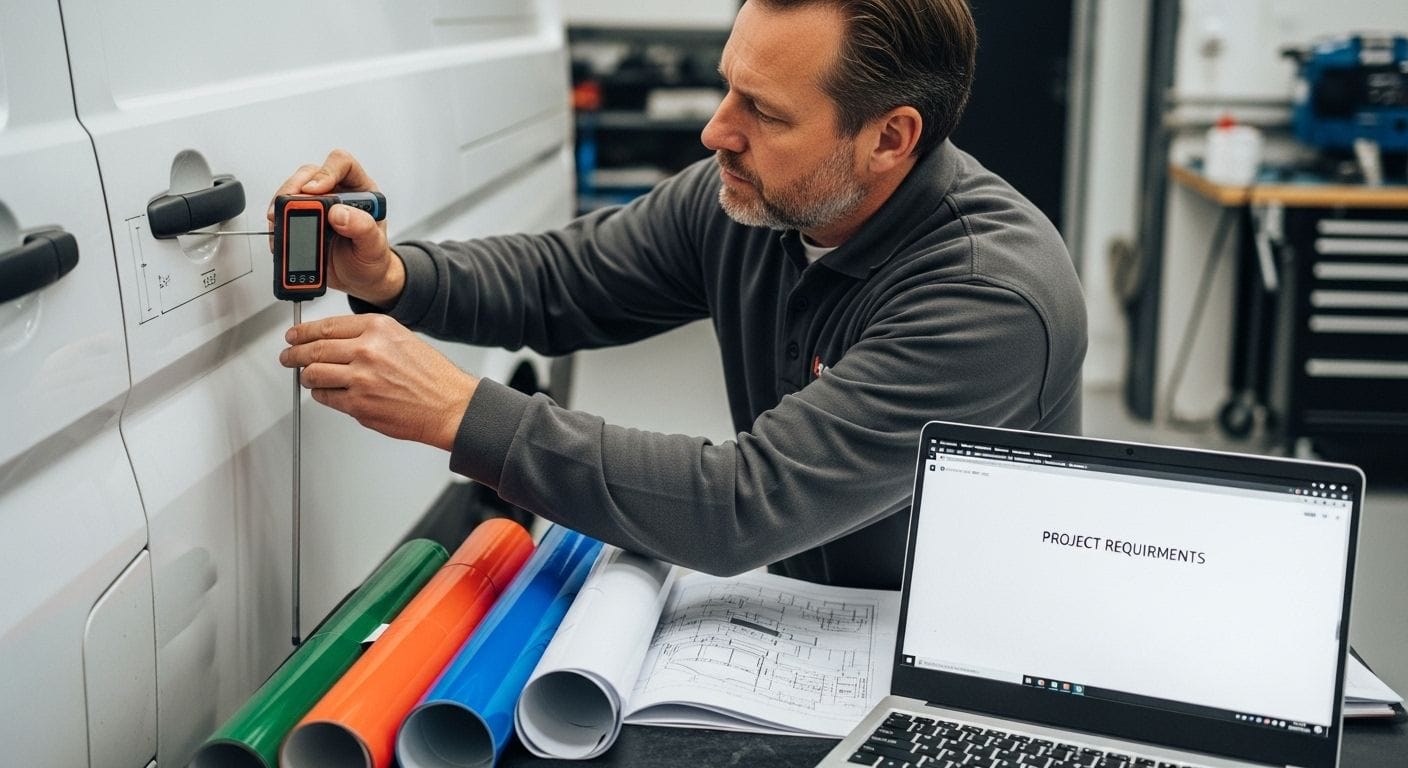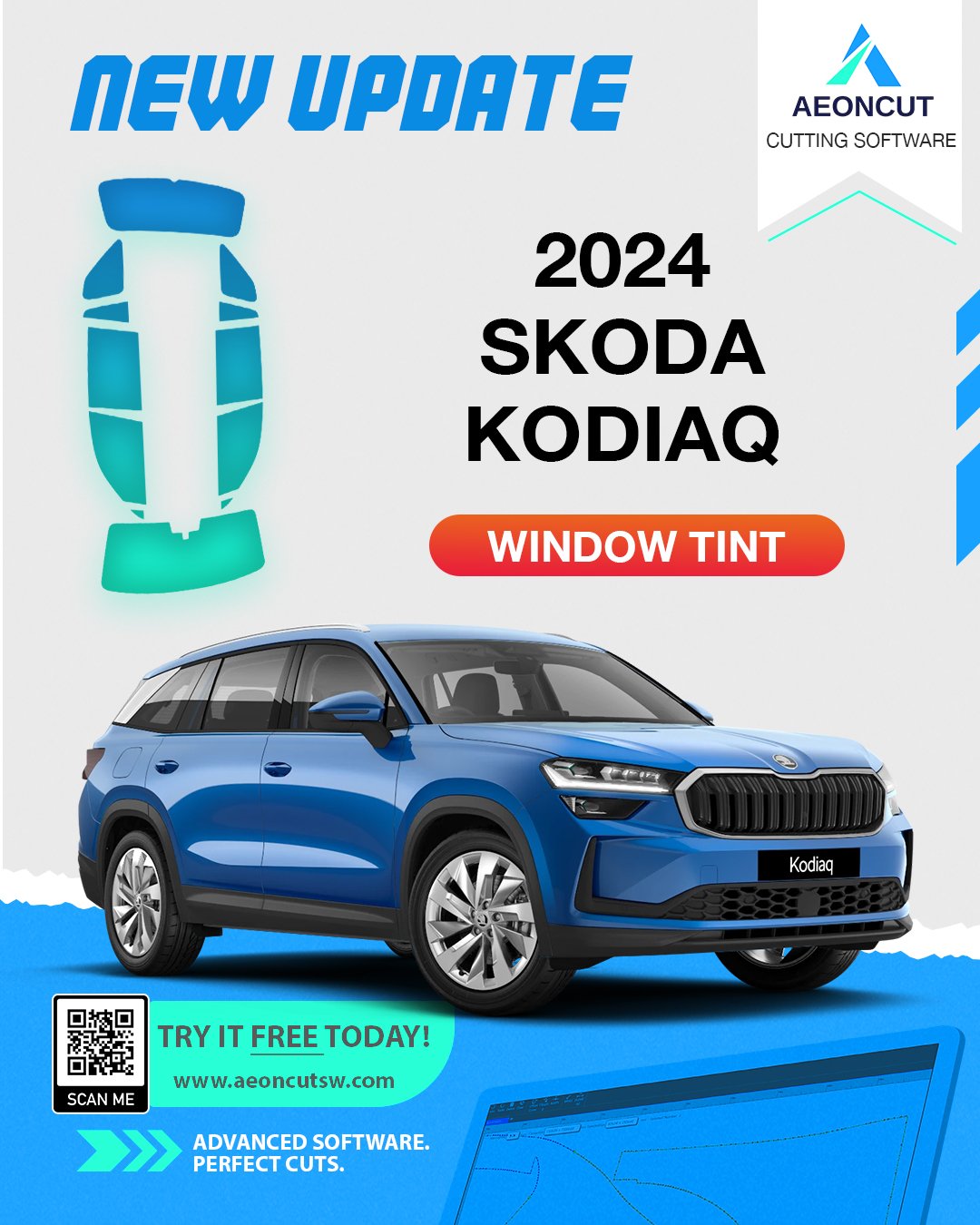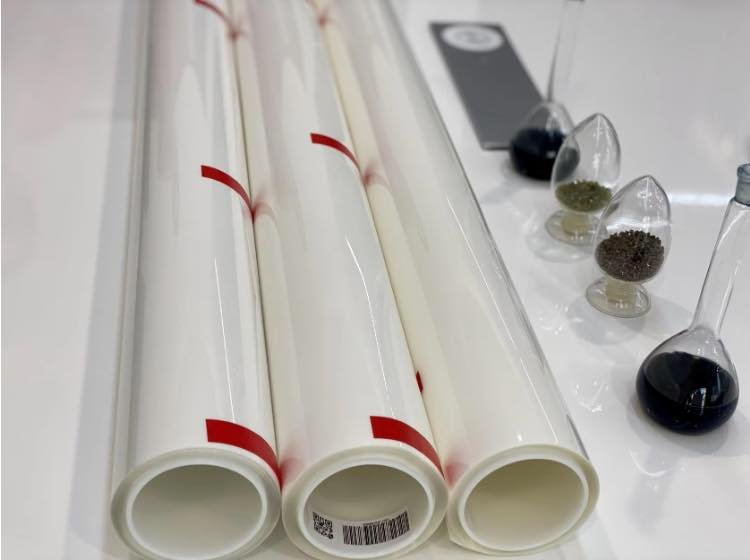

PPF has become the go-to solution for keeping a car’s paintwork pristine and untouched. Some films can now self-heal from scratches and resist temperatures from -40°C right up to 80°C. You might think this sort of defence would dull the colour or add a bulky layer. Actually, top-grade PPF stays nearly invisible and maintains the original shine, letting cars look fresh from the showroom year after year.
Table of Contents
- What Is PPF And How It Protects Paint
- The Science Behind PPF Materials
- Step-By-Step PPF Application Process
- Key Benefits For Car Care Professionals
Quick Summary
| Takeaway | Explanation |
|---|---|
| PPF acts as an invisible barrier | Paint protection film (PPF) provides a sophisticated defence against environmental and physical damage, preserving the vehicle’s exterior finish. |
| Advanced material properties | PPF is made from thermoplastic polyurethane (TPU), which has self-healing capabilities, making minor scratches disappear and maintaining the film’s integrity over time. |
| Meticulous application process | A successful PPF installation involves thorough surface preparation and precise application techniques to ensure optimal adhesion and performance, utilising heat and specialized adhesives. |
| Significant economic benefits | Offering PPF services can enhance customer satisfaction, increase revenue streams, and provide automotive professionals with a competitive edge in the market. |
| Commitment to sustainability | Modern PPF technologies incorporate eco-friendly materials, demonstrating a commitment to sustainability while providing robust vehicle protection. |
What Is PPF and How It Protects Paint
Paint protection film (PPF) represents a sophisticated automotive defence mechanism designed to preserve a vehicle’s exterior finish against environmental and physical damage. Professional car care experts understand PPF as a specialized thermoplastic urethane film engineered to shield vehicle paintwork from the constant bombardment of road debris, stone chips, insect impacts, and minor abrasions.
The Science Behind Paint Protection Technology
At its core, PPF functions as an invisible barrier that absorbs and distributes impact energy across its surface, preventing direct damage to the underlying paint. Our comprehensive guide on paint protection techniques reveals the intricate engineering behind this protective solution. The film’s molecular structure allows it to maintain transparency while providing exceptional resilience. According to Forbes automotive research, high-quality PPF can effectively protect vehicle surfaces from light hail damage and low-speed scrapes that would typically result in permanent paint scarring.
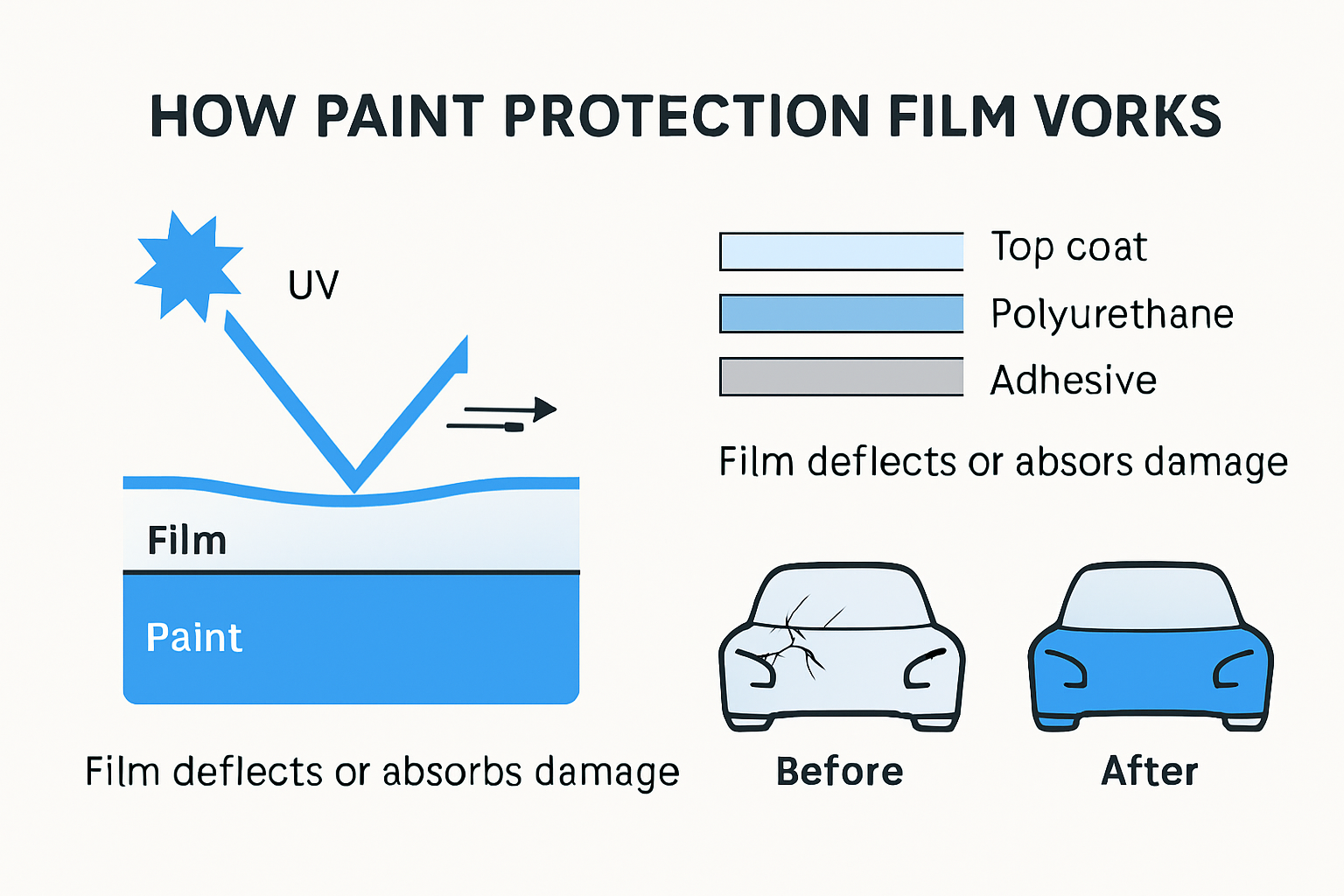
Application and Performance Characteristics
Professional installers apply PPF using precision techniques that involve heat and specialized adhesives, ensuring the film conforms perfectly to a vehicle’s complex curves and contours. Research from Graphics Avery Dennison confirms that modern PPF is designed to be transparent, allowing the original paint colour and finish to remain completely visible while providing robust protection. The film’s advanced composition enables it to self-heal minor scratches and maintain its protective properties over extended periods.
The ultimate purpose of PPF extends beyond mere surface protection. For automotive professionals, it represents a strategic investment in vehicle preservation, minimising potential repair costs and maintaining the aesthetic and monetary value of the vehicles they service. By creating a sacrificial layer that absorbs environmental impacts, PPF ensures that the original paintwork remains pristine, defending against UV radiation, chemical stains, and mechanical abrasions that can degrade a vehicle’s appearance over time.
The Science Behind PPF Materials
Thermoplastic polyurethane (TPU) represents the cornerstone of advanced paint protection film technology, offering automotive professionals a sophisticated material engineered for exceptional durability and performance. The molecular composition of PPF materials goes far beyond simple surface coverage, providing a complex protective mechanism that adapts and responds to environmental challenges.
Molecular Engineering of Protection
At the microscopic level, TPU demonstrates remarkable characteristics that make it ideal for automotive protection. Our detailed exploration of PPF technologies reveals the intricate design of these materials. According to research from the National Institutes of Health, the material’s unique molecular structure enables self-healing properties through reversible hydrogen bonding. This means minor scratches can effectively disappear as the material’s internal bonds realign and reconstruct, creating a dynamic protective layer that maintains its integrity over time.
Performance Characteristics and Material Resilience
PPF materials are engineered to withstand extreme conditions while maintaining transparency and flexibility. The thermoplastic polyurethane composition provides multiple layers of protection: an outer clear coat resists UV radiation, a middle impact-absorption layer disperses kinetic energy, and an adhesive layer ensures seamless bonding to the vehicle’s surface. Research on automotive protective coatings demonstrates that high-quality PPF can resist temperatures ranging from -40°C to 80°C, ensuring consistent performance across diverse environmental conditions.
Professional installers appreciate the sophisticated engineering behind PPF materials. The film’s molecular design allows it to conform to complex automotive contours while providing robust protection against stone chips, road debris, insect impacts, and minor abrasions. Its transparency ensures that the original paint colour remains visible, with the protective layer acting as an invisible shield that preserves the vehicle’s aesthetic and monetary value. The material’s advanced composition represents a pinnacle of automotive surface protection technology, offering car care professionals a reliable solution for maintaining vehicle appearance and integrity.
Below is a table summarising the key performance characteristics and protective features of PPF materials, helping professionals quickly compare their contributions to effective vehicle protection.
| Characteristic | Description |
|---|---|
| Material composition | Thermoplastic polyurethane (TPU) |
| Layers | Clear coat (UV resistance), impact-absorption, adhesive layer |
| Self-healing | Reversible hydrogen bonding enables minor scratch repair |
| Temperature resistance | Withstands -40°C to 80°C |
| Transparency | Maintains original paint colour and finish |
| Protection offered | Shields against stone chips, road debris, insect impacts, minor abrasions, UV, chemicals |
| Flexibility and conformity | Adapts to complex curves, ensuring seamless application |
Step-by-Step PPF Application Process
Professional paint protection film (PPF) installation demands precision, expertise, and a methodical approach that transforms vehicle surface protection into an art form. Automotive care professionals understand that successful PPF application requires meticulous preparation, sophisticated techniques, and an unwavering commitment to quality.
Surface Preparation and Cleaning
Before PPF installation begins, surface preparation becomes the critical foundation for a flawless result. Our comprehensive installation guide emphasizes the importance of thorough cleaning and surface correction. According to ClearPro’s professional installation tutorial, the process involves several precise steps: initial thorough washing, complete surface drying, clay bar treatment to remove microscopic contaminants, and a final isopropyl alcohol solution application to ensure optimal film adhesion. This rigorous preparation eliminates potential imperfections that could compromise the PPF’s performance and appearance.
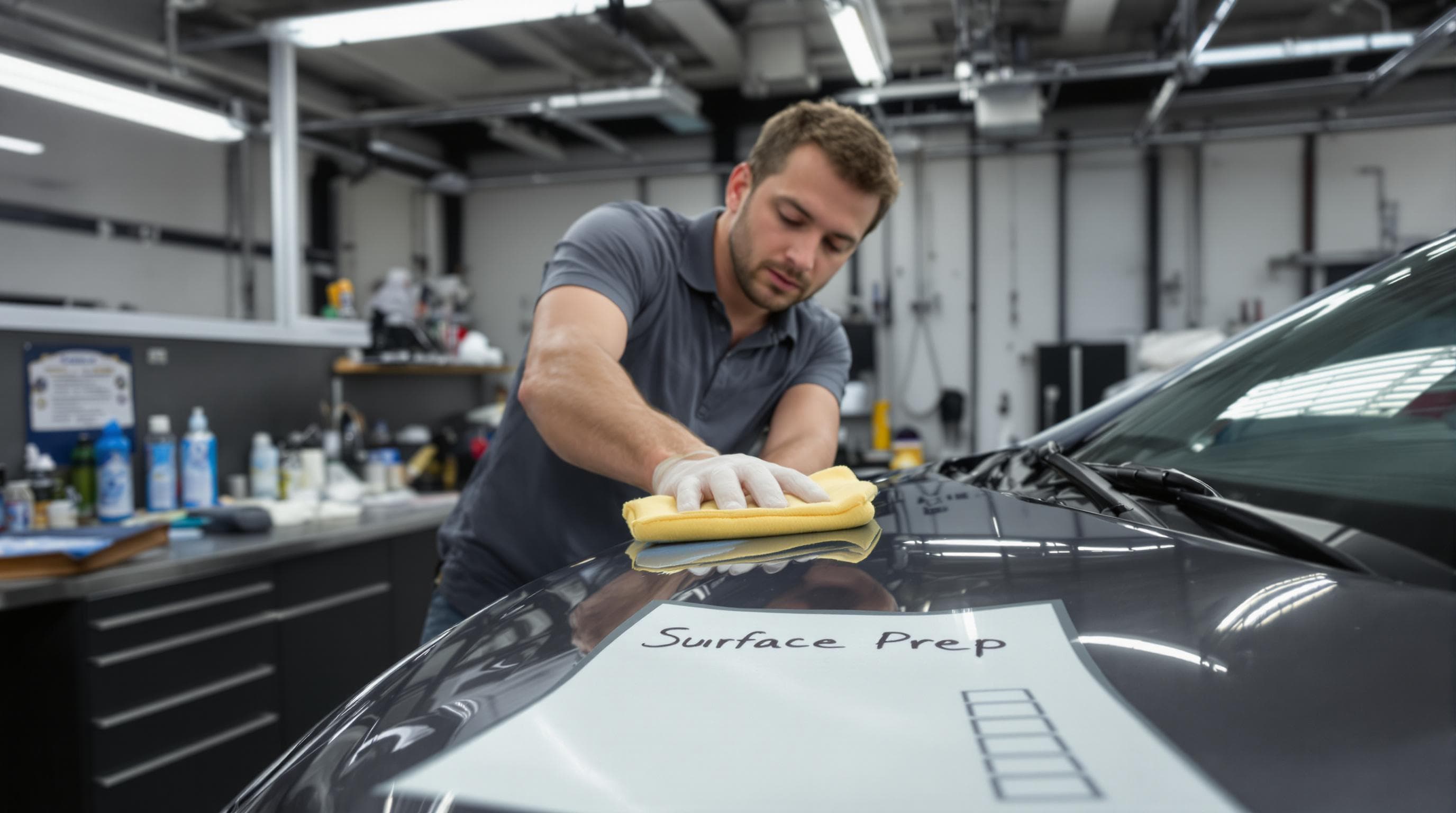
Precise Film Positioning and Application
Film installation represents the most intricate phase of the PPF application process. Vehicle Empire’s detailed guide highlights the sophisticated techniques professional installers employ. Using a specialized slip solution, technicians carefully position the film, ensuring precise alignment with the vehicle’s contours. Professional-grade squeegees are strategically used to eliminate air bubbles and excess liquid, creating a seamless bond between the film and the vehicle’s surface. Armored Inc. recommends gentle heating techniques to help the film conform perfectly to complex curves and edges, ensuring comprehensive coverage and maximum protection.
The final stage of PPF installation involves a crucial curing period that allows the protective film to settle and bond completely with the vehicle’s surface. Experienced installers understand that patience during this phase is paramount. Temperature, humidity, and environmental conditions play significant roles in ensuring optimal adhesion and performance. Professional-grade PPF installations require not just technical skill but also an intimate understanding of material properties, surface dynamics, and environmental interactions. By following these meticulous steps, automotive care professionals can deliver a paint protection solution that preserves vehicle aesthetics and value while providing robust defence against environmental challenges.
Below is a process table outlining each step in the professional PPF application process, providing a clear overview of the sequence followed by automotive installers.
| Step | Purpose |
|---|---|
| Initial thorough wash | Remove visible dirt and contaminants |
| Complete surface drying | Ensure no water remains that can compromise adhesion |
| Clay bar treatment | Eliminate microscopic contaminants |
| Isopropyl alcohol application | Prepare surface for maximum adhesion |
| Film positioning with slip solution | Achieve accurate alignment of the film |
| Squeegee use to remove bubbles | Ensure seamless bond and eliminate excess liquid |
| Gentle heating and shaping | Help film conform to curves and edges |
| Curing period | Allow full bonding and film settlement |
Key Benefits for Car Care Professionals
Paint protection film (PPF) offers automotive professionals a comprehensive solution that transcends traditional vehicle protection methods, providing multiple strategic advantages that elevate service quality and business performance. Our comprehensive analysis of PPF benefits highlights the transformative potential of this advanced technology for car care specialists.
Economic and Service Value Proposition
For automotive professionals, PPF represents more than a protective coating. According to research from Wikipedia, the film is OEM approved by virtually all car manufacturers, signifying its industry-standard quality and reliability. This endorsement translates into significant economic benefits. Professional installers can offer premium services that increase customer satisfaction, generate higher revenue streams, and differentiate themselves in a competitive market. The ability to provide a solution that preserves vehicle aesthetics and resale value becomes a powerful marketing tool.
Environmental and Technical Innovations
Modern PPF technologies are pushing the boundaries of automotive protection through innovative, environmentally conscious design. Research on eco-friendly automotive solutions reveals that contemporary paint protection films now incorporate non-toxic, water-based adhesives and partially bio-sourced resins. These advancements not only protect vehicles but also demonstrate a commitment to sustainability. The Works Auto Center highlights the remarkable self-healing properties of advanced PPF variants, which can make minor scratches disappear when exposed to heat, providing an additional value proposition for discerning clients.
Professional car care experts recognize that PPF offers more than surface-level protection. It represents a comprehensive solution that addresses client concerns about long-term vehicle maintenance, aesthetic preservation, and value retention. By investing in high-quality PPF application techniques and staying updated with technological innovations, automotive professionals can transform their service offerings. The film’s ability to protect against stone chips, environmental contaminants, and minor abrasions positions car care specialists as forward-thinking, solution-oriented service providers who understand and anticipate their clients’ evolving needs.
Frequently Asked Questions
What is Paint Protection Film (PPF)?
Paint Protection Film (PPF) is a sophisticated thermoplastic urethane film designed to protect a vehicle’s paintwork from environmental and physical damage, such as stone chips, scratches, and UV rays.
How does PPF work to protect my car?
PPF acts as an invisible barrier that absorbs and disperses impact energy, preventing direct damage to the underlying paint. Its advanced molecular structure provides self-healing properties, allowing minor scratches to disappear over time.
What are the benefits of applying PPF on my vehicle?
The application of PPF not only preserves the aesthetic and monetary value of your vehicle but also reduces the need for costly repairs by shielding against environmental impacts and maintaining the vehicle’s original finish.
How is PPF applied to a vehicle?
The PPF application process involves thorough surface preparation, precise film positioning, and the use of specialised adhesives. Professional installers also use techniques that involve heat to ensure the film conforms perfectly to the vehicle’s curves.
Take Your PPF Business Further With Precision and Speed
Are you spending too much time manually trimming PPF, risking unsightly edges, material waste and inconsistent results? As shown in our guide, the biggest challenge for car care professionals is delivering flawless protective coverage on complex vehicle surfaces, while keeping jobs efficient and profitable. You need reliable pre-cut patterns and customisability to guarantee accuracy and a perfect fit on every panel, every time.
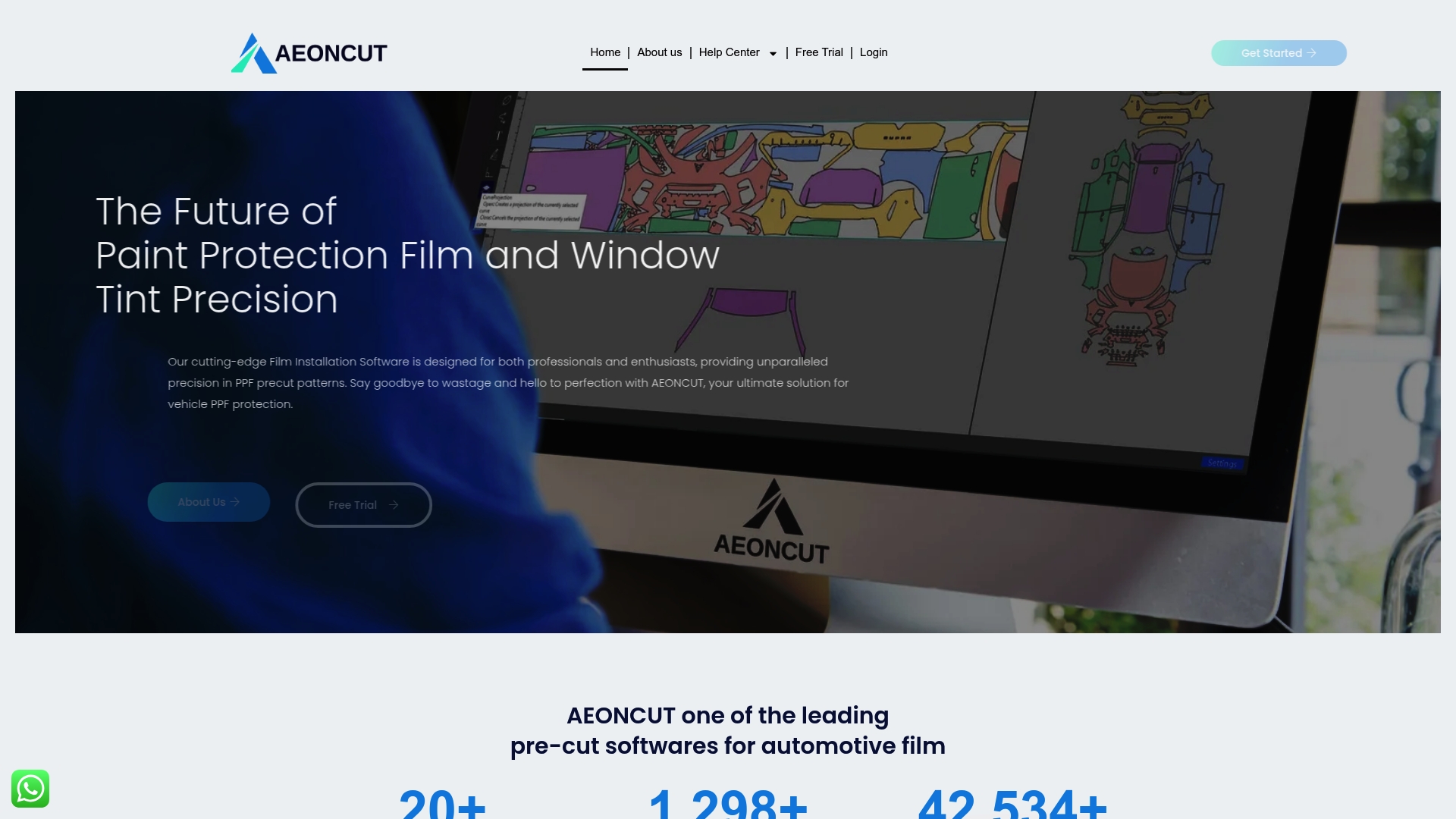
Step up to a professional standard with AEONCUT software. Our platform offers an extensive library of pre-cut automotive patterns developed specially for PPF and window tint. Access unlimited designs, enjoy cloud-based updates and put AI-driven tools to work so you waste less material and deliver better, faster installs to your clients or workshop. Register at https://aeoncutsw.com now to streamline your workflow and stay ahead in the PPF industry. The next level of precision is waiting—level up your service and never fall behind the competition again.
Recommended
- Top Paint Protection Film Benefits for Auto Professionals 2025 – AEONCUT PPF Pre-cut Cutting software
- PPF Cutting Software: Essential Guide for Installers 2025 – AEONCUT PPF Pre-cut Cutting software
- Understanding Paint Protection Film Lifespan: Insights for Professionals 2025 – AEONCUT PPF Pre-cut Cutting software
- PPF for Motorcycles: 2025 Guide for Installers & Detailers – AEONCUT PPF Pre-cut Cutting software


